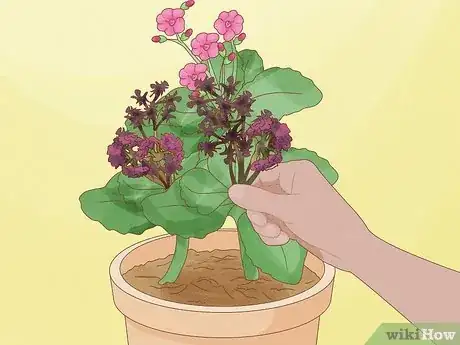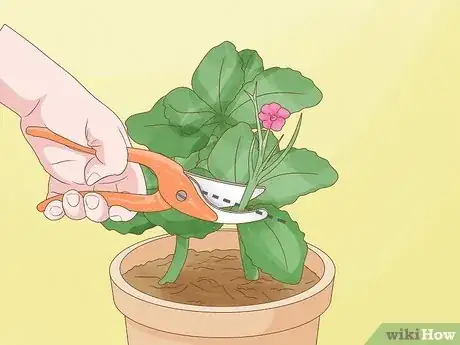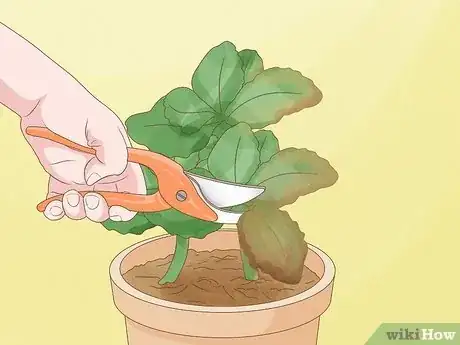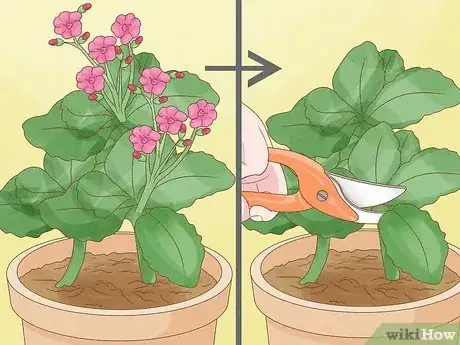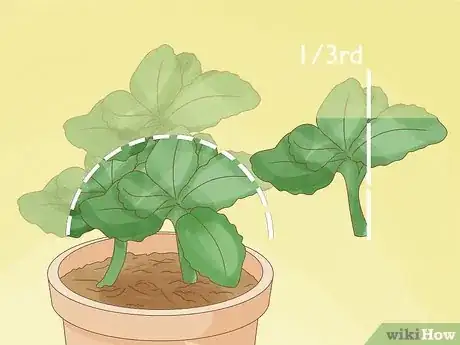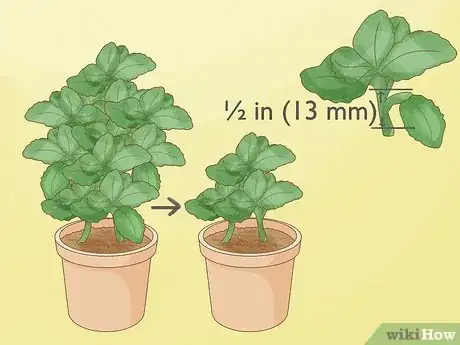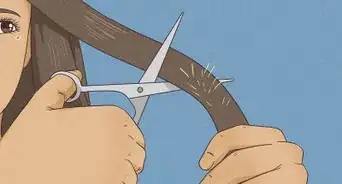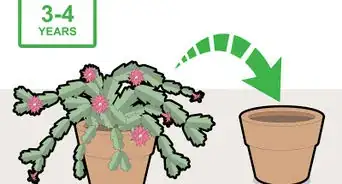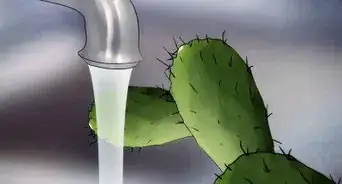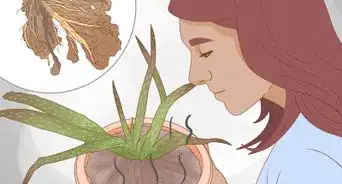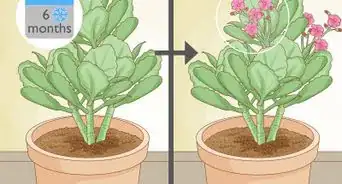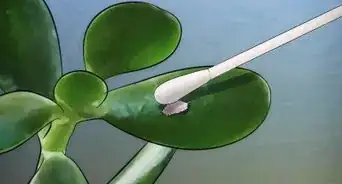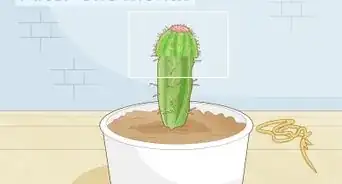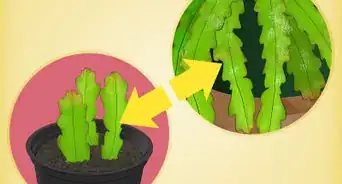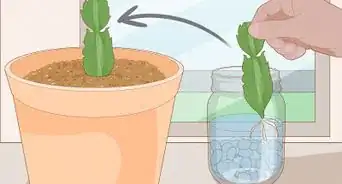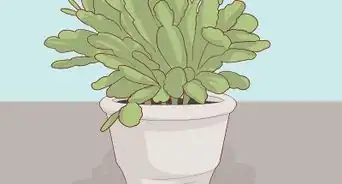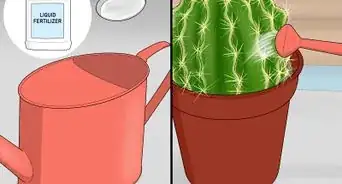This article was co-authored by Lauren Kurtz and by wikiHow staff writer, Jennifer Mueller, JD. Lauren Kurtz is a Naturalist and Horticultural Specialist. Lauren has worked for Aurora, Colorado managing the Water-Wise Garden at Aurora Municipal Center for the Water Conservation Department. She earned a BA in Environmental and Sustainability Studies from Western Michigan University in 2014.
wikiHow marks an article as reader-approved once it receives enough positive feedback. In this case, 100% of readers who voted found the article helpful, earning it our reader-approved status.
This article has been viewed 190,988 times.
The kalanchoe is a genus of plants with 125 species. This vibrant flowering plant requires minimal maintenance and can be grown indoors or out. Indoor kalanchoes may need a little extra care to keep them from growing too large. However, like most succulents, kalanchoes generally don't require extensive pruning to stay healthy and blooming for years to come.[1]
Steps
Pruning during the Blooming Season
-
1Remove spent blooms immediately. Pinch off dead or dying blooms as soon as they appear. Leaving dead blooms on the plant not only looks bad, it also keeps the plant from growing new blooms.[2]
- You can pinch off dead blooms with your fingers, or snip them off just below the base using standard pruning shears.
-
2Cut back flower stalks after removing spent blooms. Use standard pruning shears to trim the flower stalk back to the second or third leaf. This encourages branching so that your plant will grow fuller with wider leaf coverage.[3]
- Make sure your pruning shears are sharp and clean so that you don't injure your plant or introduce disease.
- Disinfect your pruning shears with rubbing alcohol or bleach diluted in water. This helps prevent the spread of infection between plants.
Advertisement -
3Take out dead or damaged leaves and shoots. Cut off yellow, brown, or decaying leaves and stems at the base, slightly above where the branch meets the stem. Broken or damaged leaves and stems should be removed using the same procedure.[4]
- Inspect the plant carefully to make sure you've removed all signs of decay or disease, or it may continue to spread throughout your plant. Removing dead and damaged foliage keeps your plant healthy and attractive.
Pruning after the Blooming Cycle
-
1Cut back tall growth when it finishes blooming. Kalanchoes will rebloom year after year, but they require a little extra care to do so. Prune your kalanchoe down after it has finished blooming for the year and remove all flower stalks to get it ready.[5]
- Your kalanchoe might get stretched out and leggy if it's not getting enough sunlight. If your plant looks leggy after pruning, move it to a location where it will get plenty of direct sunlight.
- You may also want to repot your plant in a slightly larger pot to encourage bushy growth. Place it in a sunny, warm spot, such as next to a window.
-
2Remove up to a third of each stem's length. After blooming, prune your kalanchoe down to encourage strong, healthy growth next season. Pause as you go and step back, keeping an eye on the overall shape of the plant.[6]
- If a stem is dead or damaged, cut it down to the base, just above where the branch meets the stem.
-
3Cut within 1⁄2 in (13 mm) of a leaf node to shape the plant. Find a leaf node that is pointed in the direction you want the stem to grow. Cut the stem at a 45-degree angle using sharp, clean pruning shears. New growth will branch in the direction of that leaf node.[7]
- The lower side of your angled cut should be at roughly the same height as the leaf node, on the other side of the stem.
-
4Repot or root-prune as necessary. Succulents, including kalanchoes, grow slowly. Because of this, they typically can live in the same pot for several years. However, if you succeed in getting your kalanchoe to rebloom for several seasons, you may need to move it to a larger pot eventually.
- If you see roots above the soil or growing out of the drainage holes in the pot, that's a sign that your kalanchoe may be root-bound. Transferring it to a larger pot will allow it to continue to grow.
- If you want to keep your kalanchoe roughly the same size, remove it from the pot and carefully prune its roots.
Community Q&A
-
QuestionI inherited a kalanchoe that has about 10-12 inch long stems before the first leaves appear. Will it regrow correctly if I cut the stems down near the soil?
 Community AnswerYou can cut the stems. Wait a few days for the ends to callous and then plant in soil. Water after a few days. They should grow well after that. I did that with many of my succulents. Don't throw away the part of the stem with roots. Plant it and it might grow new kalanchoe babies.
Community AnswerYou can cut the stems. Wait a few days for the ends to callous and then plant in soil. Water after a few days. They should grow well after that. I did that with many of my succulents. Don't throw away the part of the stem with roots. Plant it and it might grow new kalanchoe babies.
Warnings
- Kalanchoes are poisonous to animals. If you have kalanchoes indoors, keep them away from any pets that might be tempted to eat them.[11]⧼thumbs_response⧽
- Kalanchoe plants are vulnerable to aphids and gray mold, particularly if they are overwatered. Check for pests and diseases every time you check the moisture level.[12]⧼thumbs_response⧽
References
- ↑ https://gardenerdy.com/kalanchoe-pruning-tips
- ↑ https://www.houseplant411.com/houseplant/kalanchoe-how-to-grow-care-for-a-kalanchoe-plant
- ↑ https://gardenerdy.com/kalanchoe-pruning-tips
- ↑ https://gardenerdy.com/kalanchoe-pruning-tips
- ↑ http://www.weekendgardener.net/blog/2015/08/guide-to-growing-kalanchoe.htm
- ↑ https://worldofsucculents.com/prune-succulents/
- ↑ https://worldofsucculents.com/prune-succulents/
- ↑ http://www.weekendgardener.net/blog/2015/08/guide-to-growing-kalanchoe.htm
- ↑ http://www.flowershopnetwork.com/blog/flower-plant-care/plant-care/kalanchoe-plant-care/
About This Article
Kalanchoe are low-maintenance plants, but they do require a little bit of pruning during their blooming season. To prune your Kalanchoe, start by pinching off any dead or dying blooms that appear. Then, use standard pruning shears to trim the flower stalks back to the 2nd or 3rd leaf. If there are any damaged shoots, cut them off right above where the branch meets the stem. Once your Kalanchoe plant is done blooming, you'll still want to do some light pruning to help it keep its shape. Remove about 1/3 of the length of the stems. Then, cut away any unruly leaf nodes at a 45-degree angle until you're happy with the shape. To learn how to replant your Kalanchoe, read more from our Gardening co-author!
